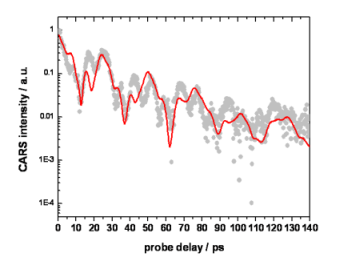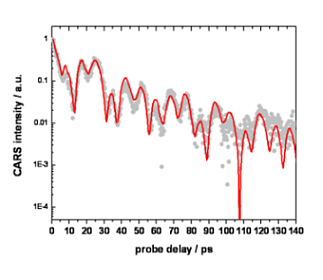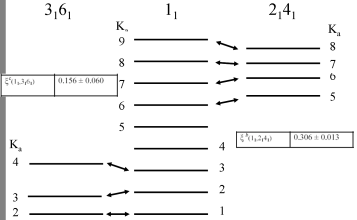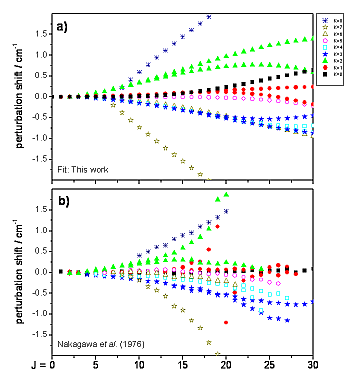Investigation of Coriolis coupling by fs CARS
The technique of femtosecond time-resolved coherent anti-Stokes Raman scattering (fs-CARS) is used to investigate the strongly perturbed n1 ro-vibrational Raman band of formaldehyde (H2CO) [1,2]. The time-dependent signal is simulated using a ‘Watson-’ Hamiltonian in A-type reduction and Raman theory for asymmetric rotors. The fs-CARS method is sensitive to spectral irregularities or line shifts of the involved transitions. ‘Coriolis’ interactions play a major role in the analysis of the n1 band of formaldehyde [3].
[1] A. Walser, P. Beaud, P.P. Radi, M. Tulej, T. Gerber and G.Knopp, J. Raman Spectrosc., 38, 147-153 (2007).
[2] G. Knopp, A. M. Walser, P.P. Radi, P. Beaud, M. Tulej, T. Gerber, Ultrafast Phenomena XV, Springer Series in Chemical Physics, 88, 567-569, (2007).
[3] T. Nakagawa, K. Yamada, K. Kuchitsu, Journal of Molecular Spectroscopy, 63, 485, (1976).
 |
 |
Figures: Fs CARS transient signals from the n1 band of H2CO. The simulation does not include (left) and considers (right) Coriolis perturbations.
By a 'nonlinear least-square fit' to the fs-CARS signals, the Coriolis perturbation induced lineshifts and the corresponding coupling constants could be derived.
 |
 |
Figures: Interfering energy levels and fitted lineshifts for the individual K-stacks.